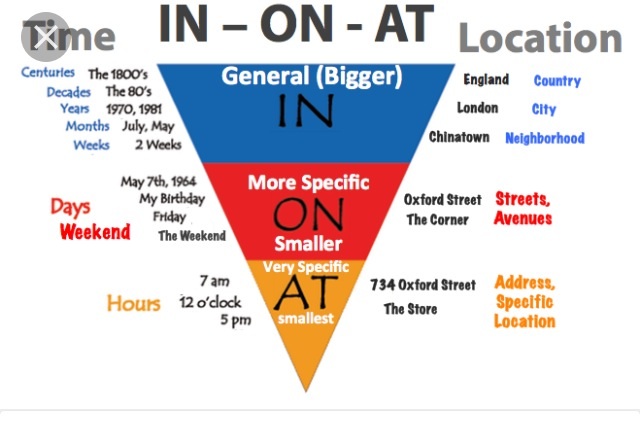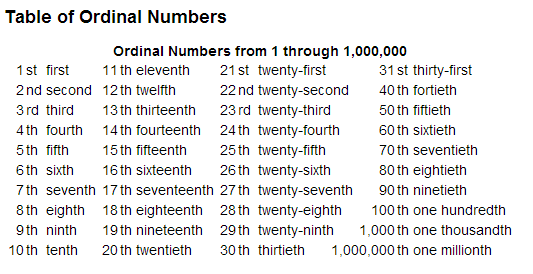Message:
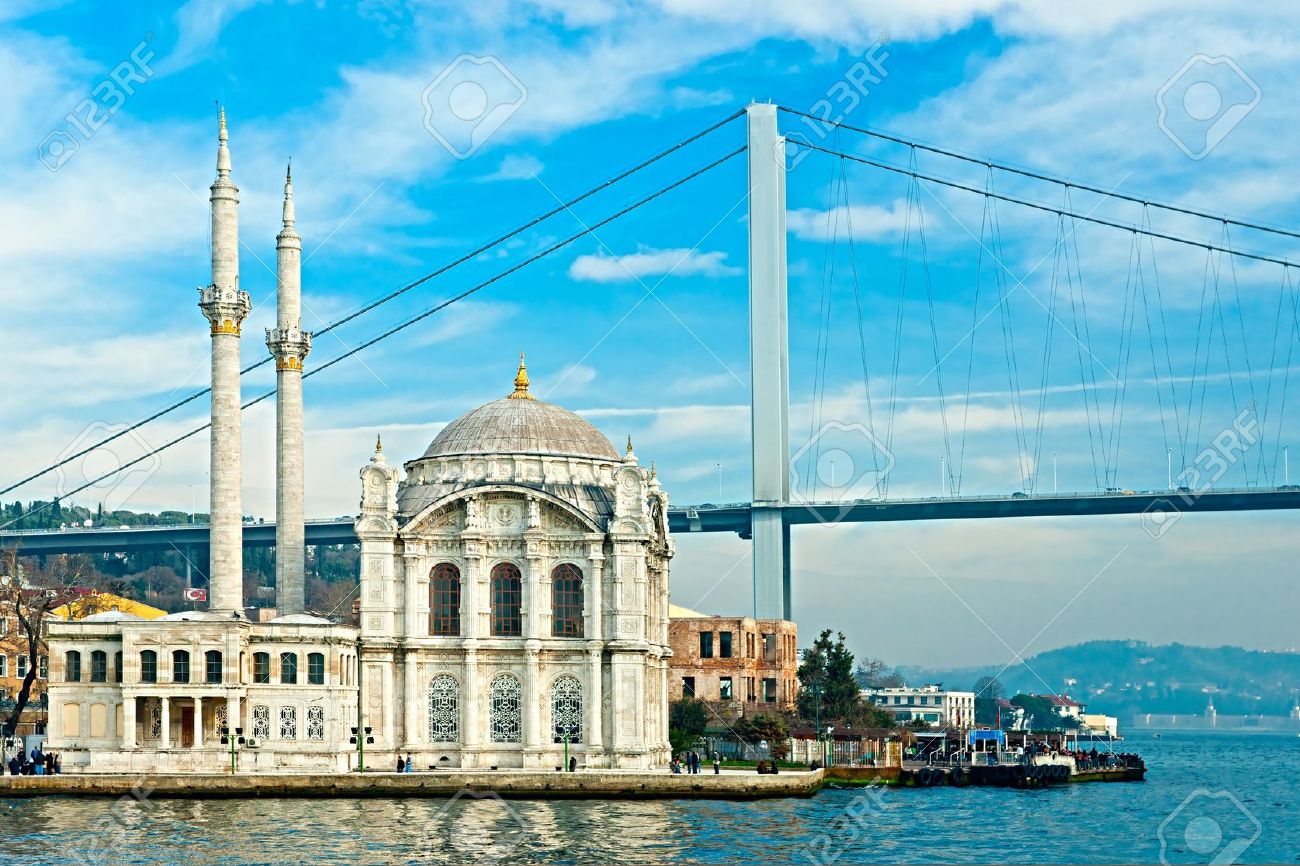
Istanbul (/ˌɪstænˈbʊl/ or /ˌɪstænˈbuːl/ or /ɪˈstænbʊl/;[7][8] Turkish: İstanbul [isˈtɑnbuɫ] ( listen)), historically known as Constantinople and Byzantium, is the most populous city in Turkey and the country's economic, cultural, and historic center. Istanbul is a transcontinental city in Eurasia, straddling the Bosphorus strait (which separates Europe and Asia) between the Sea of Marmara and the Black Sea. Its commercial and historical center lies on the European side and about a third of its population lives on the Asian side.[9] The city is the administrative center of the Istanbul Metropolitan Municipality (coterminous with Istanbul Province), both hosting a population of around 14.7 million residents.[3] Istanbul is one of the world's most populous cities and ranks as the world's 7th-largest city proper and the largest European city.
Founded under the name of Byzantium on the Sarayburnu promontory around 660 BCE, the city developed to become one of the most significant in history. After its reestablishment as Constantinople in 330 CE, it served as an imperial capital for almost 16 centuries, during the Roman and Byzantine (330–1204 and 1261–1453), the Latin (1204–1261), and the Ottoman (1453–1922) empires.[10] It was instrumental in the advancement of Christianity during Roman and Byzantine times, before the Ottomans conquered the city in 1453 and transformed it into an Islamic stronghold and the seat of the Ottoman Caliphate.[11]
Istanbul's strategic position on the historic Silk Road,[12] rail networks to Europe and the Middle East, and the only sea route between the Black Sea and the Mediterranean have produced a cosmopolitan populace, although less so since the establishment of the Turkish Republic in 1923. Overlooked for the new capital Ankara during the interwar period, the city has since regained much of its prominence. The population of the city has increased tenfold since the 1950s, as migrants from across Anatolia have moved in and city limits have expanded to accommodate them.[13][14] Arts, music, film, and cultural festivals were established at the end of the 20th century and continue to be hosted by the city today. Infrastructure improvements have produced a complex transportation network.
Approximately 12.56 million foreign visitors arrived in Istanbul in 2015, five years after it was named a European Capital of Culture, making the city the world's fifth most popular tourist destination.[15] The city's biggest attraction is its historic center, partially listed as a UNESCO World Heritage Site, and its cultural and entertainment hub can be found across the city's natural harbor, the Golden Horn, in the Beyoğlu district. Considered a global city,[16] Istanbul has one of the fastest-growing metropolitan economies in the world.[17] It hosts the headquarters of many Turkish companies and media outlets and accounts for more than a quarter of the country's gross domestic product.[18] Hoping to capitalize on its revitalization and rapid expansion, Istanbul has bid for the Summer Olympics five times in twenty years.[19]
The first known name of the city is Byzantium (Greek: Βυζάντιον, Byzántion), the name given to it at its foundation by Megarean colonists around 660 BCE.[20] The name is thought to be derived from a personal name, Byzas. Ancient Greek tradition refers to a legendary king of that name as the leader of the Greek colonists. Modern scholars have also hypothesized that the name of Byzas was of local Thracian or Illyrian origin and hence predated the Megarean settlement.[21]
After Constantine the Great made it the new eastern capital of the Roman Empire in 330 CE, the city became widely known as "Constantinopolis" (Constantinople), which, as the Latinized form of "Κωνσταντινούπολις" (Konstantinoúpolis), means the "City of Constantine".[20] He also attempted to promote the name "Nova Roma" and its Greek version "Νέα Ῥώμη" Nea Romē (New Rome), but this did not enter widespread usage.[22] Constantinople remained the most common name for the city in the West until the establishment of the Turkish Republic, and Kostantiniyye (Ottoman Turkish: قسطنطينيه) and Be Makam-e Qonstantiniyyah al-Mahmiyyah (meaning "the Protected Location of Constantinople" and İstanbul were the names used alternatively by the Ottomans during their rule.[23] The use of Constantinople to refer to the city during the Ottoman period (from the mid-15th century) is now considered politically incorrect, even if not historically inaccurate, by Turks.[24]
and İstanbul were the names used alternatively by the Ottomans during their rule.[23] The use of Constantinople to refer to the city during the Ottoman period (from the mid-15th century) is now considered politically incorrect, even if not historically inaccurate, by Turks.[24]
By the 19th century, the city had acquired other names used by either foreigners or Turks. Europeans used Constantinople to refer to the whole of the city, but used the name Stamboul—as the Turks also did—to describe the walled peninsula between the Golden Horn and the Sea of Marmara.[24] Pera (from the Greek word for "across" was used to describe the area between the Golden Horn and the Bosphorus, but Turks also used the name Beyoğlu (today the official name for one of the city's constituent districts).[25] Islambol (meaning either "City of Islam" or "Full of Islam"
was used to describe the area between the Golden Horn and the Bosphorus, but Turks also used the name Beyoğlu (today the official name for one of the city's constituent districts).[25] Islambol (meaning either "City of Islam" or "Full of Islam" was sometimes colloquially used to refer to the city, and was even engraved on some Ottoman coins,[26] but the belief that it was the precursor to the present name, İstanbul, is belied by the fact that the latter existed well before the former and even predates the Ottoman conquest of the city.[20]
was sometimes colloquially used to refer to the city, and was even engraved on some Ottoman coins,[26] but the belief that it was the precursor to the present name, İstanbul, is belied by the fact that the latter existed well before the former and even predates the Ottoman conquest of the city.[20]
The name İstanbul (Turkish pronunciation: [isˈtanbuɫ] ( listen), colloquially [ɯsˈtambuɫ]) is commonly held to derive from the Medieval Greek phrase "εἰς τὴν Πόλιν" (pronounced [is tim ˈbolin]), which means "to the city"[27] and is how Constantinople was referred to by the local Greeks. This reflected its status as the only major city in the vicinity. The importance of Constantinople in the Ottoman world was also reflected by its Ottoman name 'Der Saadet' meaning the 'gate to Prosperity' in Ottoman. An alternative view is that the name evolved directly from the name Constantinople, with the first and third syllables dropped.[20] A Turkish folk etymology traces the name to Islam bol "plenty of Islam"[28] because the city was called Islambol ("plenty of Islam" or Islambul ("find Islam"
or Islambul ("find Islam" as the capital of the Islamic Ottoman Empire. It is first attested shortly after the conquest, and its invention was ascribed by some contemporary writers to Sultan Mehmed II himself.[29] Some Ottoman sources of the 17th century, such as Evliya Çelebi, describe it as the common Turkish name of the time; between the late 17th and late 18th centuries, it was also in official use. The first use of the word "Islambol" on coinage was in 1703 (1115 AH) during the reign of Sultan Ahmed III. Nevertheless, the use of the name Constantinople remained common in English into the 20th century, Istanbul became common only after Turkey adapted the Latin alphabet in 1928 and urged other countries to use the city's Turkish name.[30][31]
as the capital of the Islamic Ottoman Empire. It is first attested shortly after the conquest, and its invention was ascribed by some contemporary writers to Sultan Mehmed II himself.[29] Some Ottoman sources of the 17th century, such as Evliya Çelebi, describe it as the common Turkish name of the time; between the late 17th and late 18th centuries, it was also in official use. The first use of the word "Islambol" on coinage was in 1703 (1115 AH) during the reign of Sultan Ahmed III. Nevertheless, the use of the name Constantinople remained common in English into the 20th century, Istanbul became common only after Turkey adapted the Latin alphabet in 1928 and urged other countries to use the city's Turkish name.[30][31]
In modern Turkish, the name is written as İstanbul, with a dotted İ, as the Turkish alphabet distinguishes between a dotted and dotless I. In English the stress is on the last syllable (bul), but in Turkish it is on the second syllable (tan).[32] A person from the city is an İstanbullu (plural: İstanbullular), although Istanbulite is used in English.[33]
Neolithic artifacts, uncovered by archeologists at the beginning of the 21st century, indicate that Istanbul's historic peninsula was settled as far back as the 7th millennium BCE.[34] That early settlement, important in the spread of the Neolithic Revolution from the Near East to Europe, lasted for almost a millennium before being inundated by rising water levels.[35][36][37][38] The first human settlement on the Asian side, the Fikirtepe mound, is from the Copper Age period, with artifacts dating from 5500 to 3500 BCE,[39] On the European side, near the point of the peninsula (Sarayburnu), there was a Thracian settlement during the early 1st millennium BCE. Modern authors have linked it to the Thracian toponym Lygos,[40] mentioned by Pliny the Elder as an earlier name for the site of Byzantium.[41]
The history of the city proper begins around 660 BCE,[42][a] when Greek settlers from Megara established Byzantium on the European side of the Bosphorus. The settlers built an acropolis adjacent to the Golden Horn on the site of the early Thracian settlements, fueling the nascent city's economy.[48] The city experienced a brief period of Persian rule at the turn of the 5th century BCE, but the Greeks recaptured it during the Greco-Persian Wars.[49] Byzantium then continued as part of the Athenian League and its successor, the Second Athenian Empire, before gaining independence in 355 BCE.[50] Long allied with the Romans, Byzantium officially became a part of the Roman Empire in 73 CE.[51] Byzantium's decision to side with the Roman usurper Pescennius Niger against Emperor Septimius Severus cost it dearly; by the time it surrendered at the end of 195 CE, two years of siege had left the city devastated.[52] Five years later, Severus began to rebuild Byzantium, and the city regained—and, by some accounts, surpassed—its previous prosperity.[53]
Constantine the Great effectively became the emperor of the whole of the Roman Empire in September 324.[54] Two months later, he laid out the plans for a new, Christian city to replace Byzantium. As the eastern capital of the empire, the city was named Nova Roma; most called it Constantinople, a name that persisted into the 20th century.[55] On 11 May 330, Constantinople was proclaimed the capital of the Roman Empire, which was later permanently divided between the two sons of Theodosius I upon his death on 17 January 395, when the city became the capital of the Eastern Roman (Byzantine) Empire.[56]
The establishment of Constantinople served as one of Constantine's most lasting accomplishments, shifting Roman power eastward as the city became a center of Greek culture and Christianity.[56][57] Numerous churches were built across the city, including the Hagia Sophia which was built during the reign of Justinian the Great and remained the world's largest cathedral for a thousand years.[58] Constantine also undertook a major renovation and expansion of the Hippodrome of Constantinople; accommodating tens of thousands of spectators, the hippodrome became central to civic life and, in the 5th and 6th centuries, the epicenter of episodes of unrest, including the Nika riots.[59][60] Constantinople's location also ensured its existence would stand the test of time; for many centuries, its walls and seafront protected Europe against invaders from the east and the advance of Islam.[57] During most of the Middle Ages, the latter part of the Byzantine era, Constantinople was the largest and wealthiest city on the European continent and at times the largest in the world.[61][62]
Constantinople began to decline continuously after the end of the reign of Basil II in 1025. The final blow was given by the conquest of Villardouin and Enrico Dandolo in 1204 during the Fourth Crusade, where the City was sacked and pillaged.[63] The city subsequently became the center of the Latin Empire, created by Catholic crusaders to replace the Orthodox Byzantine Empire.[64] Hagia Sophia was converted to a catholic church in 1204. The Byzantine Empire was restored, albeit weakened, in 1261.[65] Constantinople's churches, defenses, and basic services were in disrepair,[66] and its population had dwindled to a hundred thousand from half a million during the 8th century.[c] After the reconquest of 1261, however some of the City's monuments were restored, like the 2 Deisis mosaics in Aghia Sofia and Kariye were created.
Various economic and military policies instituted by Andronikos II, such as the reduction of military forces, weakened the empire and left it vulnerable to attack.[67] In the mid-14th-century, the Ottoman Turks began a strategy of gradually taking smaller towns and cities, cutting off Constantinople's supply routes and strangling it slowly.[68] On 29 May 1453, after an eight-week siege (during which the last Roman emperor, Constantine XI, was killed), Sultan Mehmed II "the Conqueror" captured Constantinople and declared it the new capital of the Ottoman Empire. Hours later, the sultan rode to the Hagia Sophia and summoned an imam to proclaim the Islamic creed, converting the grand cathedral into an imperial mosque due to the city's refusal to surrender peacefully.[69] Mehmed declared himself as the new "Kaysar-i Rûm" (the Ottoman Turkish equivalent of Caesar of Rome) and the Ottoman state was reorganized into an empire.[70]
Following the conquest of Constantinople, Mehmed II immediately set out to revitalize the city, by then also known as Istanbul. He urged the return of those who had fled the city during the siege, and resettled Muslims, Jews, and Christians from other parts of Anatolia. He demanded that five thousand households needed to be transferred to Constantinople by September.[71] From all over the Islamic empire, prisoners of war and deported people were sent to the city: these people were called "Sürgün" in Turkish (Greek: σουργουνιδες).[72] However, many people escaped again from the city, and there were several outbreaks of plague, so that in 1459 Mehmet allowed the deported Greeks to come back to the city.[73] He also invited people from all over Europe to his capital, creating a cosmopolitan society that persisted through much of the Ottoman period.[74] Plague continued, however, to be essentially endemic in Istanbul for the rest of the century, as it had been from 1520, with a few years of respite between 1529 and 1533, 1549 and 1552, and from 1567 to 1570; epidemics originating in the West and in the Hejaz and southern Russia.[75] Population growth in Anatolia, however, allowed Istanbul to replace its losses and maintain its population of around 500,000 inhabitants down to 1800. Mehmed II also repaired the city's damaged infrastructure, including the whole water system, began to build the Grand Bazaar, and constructed Topkapı Palace, the sultan's official residence.[76] With the transfer of the capital from Edirne (formerly Adrianople) to Constantinople, the new state was declared as the successor and continuation of the Roman Empire.[77]
The Ottomans quickly transformed the city from a bastion of Christianity to a symbol of Islamic culture. Religious foundations were established to fund the construction of ornate imperial mosques, often adjoined by schools, hospitals, and public baths.[76] The Ottoman Dynasty claimed the status of caliphate in 1517, with Istanbul remaining the capital of this last caliphate for four centuries.[11] Suleiman the Magnificent's reign from 1520 to 1566 was a period of especially great artistic and architectural achievement; chief architect Mimar Sinan designed several iconic buildings in the city, while Ottoman arts of ceramics, stained glass, calligraphy, and miniature flourished.[78] The population of Istanbul was 570,000 by the end of the 18th century.[79]
A period of rebellion at the start of the 19th century led to the rise of the progressive Sultan Mahmud II and eventually to the Tanzimat period, which produced political reforms and allowed new technology to be introduced to the city.[80] Bridges across the Golden Horn were constructed during this period,[81] and Istanbul was connected to the rest of the European railway network in the 1880s.[82] Modern facilities, such as a water supply network, electricity, telephones, and trams, were gradually introduced to Istanbul over the following decades, although later than to other European cities.[83] The modernization efforts were not enough to forestall the decline of the Ottoman Empire.
In the early 20th century, the Young Turk Revolution deposed Sultan Abdul Hamid II and a series of wars plagued the ailing empire's capital.[84] The last of these, World War I, resulted in the British, French, and Italian occupation of Constantinople. The Armenian population of the city was also affected by the deportation of Armenian intellectuals on 24 April 1915, in which leaders of the Armenian community were arrested and mostly killed as part of the Armenian Genocide. To commemorate the victims of the Armenian Genocide, 24 April has now become the day of remembrance.[85] The final Ottoman sultan, Mehmed VI, was exiled in November 1922; the following year, the occupation of Constantinople ended with the signing of the Treaty of Lausanne and the recognition of the Republic of Turkey, declared by Mustafa Kemal Atatürk.[86]
In the early years of the republic, Istanbul was overlooked in favor of Ankara, selected as Turkey's capital to distance the new, secular country from its Ottoman history.[87] From the late 1940s and early 1950s, Istanbul underwent great structural change, as new public squares, boulevards, and avenues were constructed throughout the city, sometimes at the expense of historical buildings.[88] The population of Istanbul began to rapidly increase in the 1970s, as people from Anatolia migrated to the city to find employment in the many new factories that were built on the outskirts of the sprawling metropolis. This sudden, sharp rise in the city's population caused a large demand for housing, and many previously outlying villages and forests became engulfed into the metropolitan area of Istanbul.[89]
Istanbul is located in north-western Turkey within the Marmara Region on a total area of 5,343 square kilometers (2,063 sq mi).[b] The Bosphorus, which connects the Sea of Marmara to the Black Sea, divides the city into a European, Thracian side—comprising the historic and economic centers—and an Asian, Anatolian side. The city is further divided by the Golden Horn, a natural harbor bounding the peninsula where the former Byzantium and Constantinople were founded. The confluence of the Sea of Marmara, the Bosphorus, and the Golden Horn at the heart of present-day Istanbul has deterred attacking forces for thousands of years and remains a prominent feature of the city's landscape.[57]
Following the model of Rome, the historic peninsula is said to be characterized by seven hills, each topped by imperial mosques. The easternmost of these hills is the site of Topkapı Palace on the Sarayburnu.[94] Rising from the opposite side of the Golden Horn is another, conical hill, where the modern Beyoğlu district is situated. Because of the topography, buildings in Beyoğlu were once constructed with the help of terraced retaining walls, and roads were laid out in the form of steps.[95] Üsküdar on the Asian side exhibits similarly hilly characteristics, with the terrain gradually extending down to the Bosphorus coast, but the landscape in Şemsipaşa and Ayazma is more abrupt, akin to a promontory. The highest point in Istanbul is Çamlıca Hill, with an altitude of 288 meters (945 ft).[95] The northern half of Istanbul has a higher mean elevation compared to the south coast, with locations surpassing 200 meters (660 ft), and some coasts with steep cliffs resembling fjords, especially around the northern end of the Bosporus, where it opens up to the Black Sea.
Istanbul is situated near the North Anatolian Fault, close to the boundary between the African and Eurasian Plates. This fault zone, which runs from northern Anatolia to the Sea of Marmara, has been responsible for several deadly earthquakes throughout the city's history. Among the most devastating of these seismic events was the 1509 earthquake, which caused a tsunami that broke over the walls of the city and killed more than 10,000 people. More recently, in 1999, an earthquake with its epicenter in nearby İzmit left 18,000 people dead, including 1,000 people in Istanbul's suburbs. The people of Istanbul remain concerned that an even more catastrophic seismic event may be in the city's near future, as thousands of structures recently built to accommodate Istanbul's rapidly increasing population may not have been constructed properly.[96] Seismologists say the risk of a 7.6-magnitude or greater earthquake striking Istanbul by 2030 is more than 60 percent.[97][98]





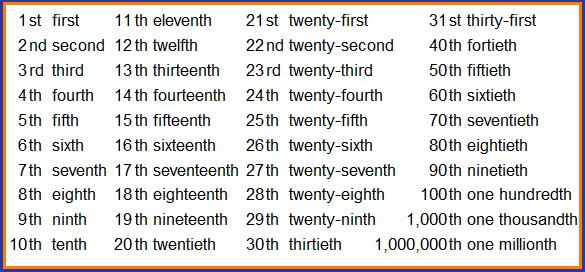

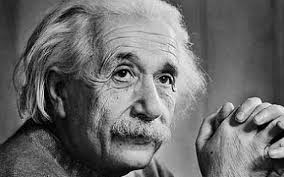
 . He received the 1921 Nobel Prize in Physics for his "services to theoretical physics", in particular his discovery of the law of the photoelectric effect, a pivotal step in the evolution of quantum theory.
. He received the 1921 Nobel Prize in Physics for his "services to theoretical physics", in particular his discovery of the law of the photoelectric effect, a pivotal step in the evolution of quantum theory.